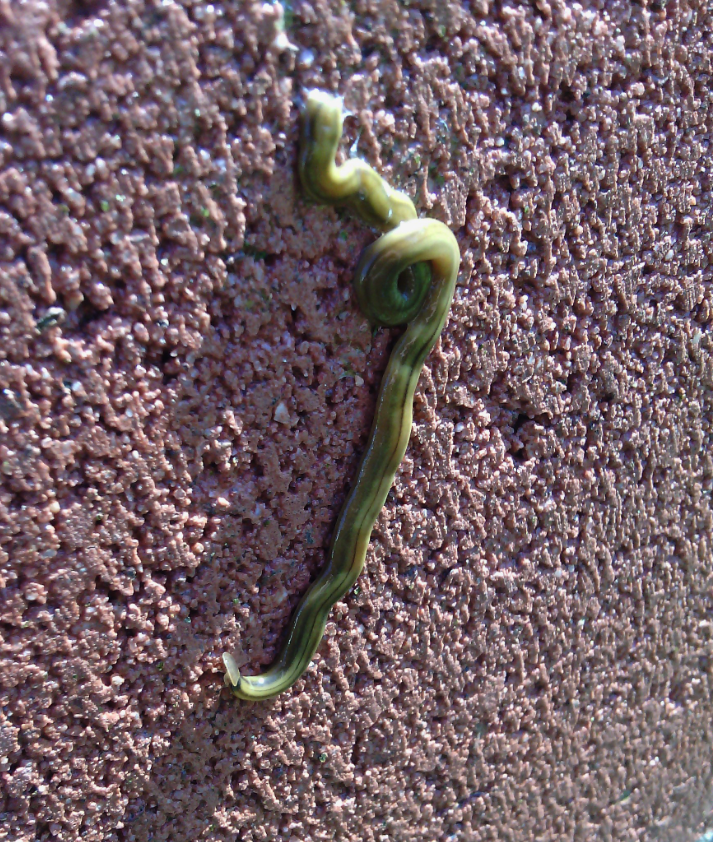- Joined
- Feb 27, 2005
- Messages
- 499
Every so often I've found these beautiful striped flatworms when we're in Florida, but I was never able to keep them alive for long - or so I thought.


I do remember putting one in this tank before I repurposed it for an Amblypigid, and I never saw it again until now, about a year later, when I suddenly noticed dozens in the tank!
I didn't know what they were eating until I started seeing them wrapped around crickets, as you can plainly see in the photographs.
What I'm still not sure of is whether they're only scavenging dead crickets, or actually killing them. I'd swear in some cases the crickets were moving only minutes before and weren't touched at all by Piggie.
This tank has very deep, very moist soil which I believe is part of why they're thriving. Its lid is also a solid piece of glass tightly sealed all the way around, otherwise they could very easily ooze out and escape!
I'm not sure just how big their population is, but I may set up a similar tank and transfer some, get some more populations going. They're just such an interesting, unique clean-up crew! I might consider selling some later, but I wouldn't want to run low. It took me years of trial and error to get these things to multiply, even if I only succeeded when I stopped trying.


I do remember putting one in this tank before I repurposed it for an Amblypigid, and I never saw it again until now, about a year later, when I suddenly noticed dozens in the tank!
I didn't know what they were eating until I started seeing them wrapped around crickets, as you can plainly see in the photographs.
What I'm still not sure of is whether they're only scavenging dead crickets, or actually killing them. I'd swear in some cases the crickets were moving only minutes before and weren't touched at all by Piggie.
This tank has very deep, very moist soil which I believe is part of why they're thriving. Its lid is also a solid piece of glass tightly sealed all the way around, otherwise they could very easily ooze out and escape!
I'm not sure just how big their population is, but I may set up a similar tank and transfer some, get some more populations going. They're just such an interesting, unique clean-up crew! I might consider selling some later, but I wouldn't want to run low. It took me years of trial and error to get these things to multiply, even if I only succeeded when I stopped trying.


